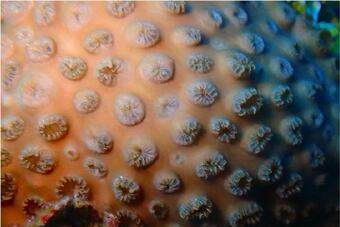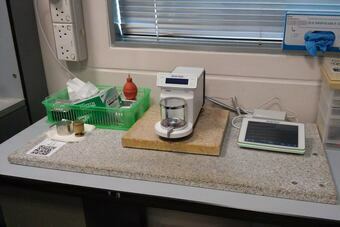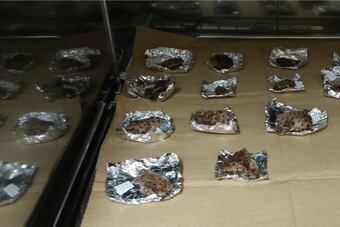Publications:
Santos et al. 2021
Benthic cnidarians are suspension feeders that ingest items ranging from particulate organic matter to macrozooplankton. Additionally, many species receive photosynthetic products from associated endosymbiotic microalgae (Symbiodiniaceae). Although benthic cnidarians are ubiquitous to reef ecosystems, variation in their nutrition acquisition strategy across distinct environments is poorly understood. In this study, we evaluated the trophic niche and symbiotic interactions of the widespread species Palythoa tuberculosa (Hexacorallia: Zoantharia) inhabiting depths ranging from the intertidal to 35 m across three Indo-Pacific regions, using carbon and nitrogen stable isotope ratios and isotopic niche metrics. Our results revealed that populations in shallow (0-8 m) and deep zones (down to 35 m) had distinct niche placements and overlap with the endosymbionts’ niches across all regions. Associated Symbiodiniaceae were identified as Cladocopium. Contradicting the paradigm of a more productive endosymbiosis in shallower waters, P. tuberculosa had less isotopic niche overlap with its endosymbionts in shallow reefs (0–9%) but a higher niche overlap in deep waters (up to 70%). Among regions, this was most evident in Dongsha Atoll, South China Sea, which has comparatively high influence of internal waves and, thus, high concentrations of plankton. The low niche overlap with endosymbionts in shallow waters indicated that P. tuberculosa may have a high heterotrophic performance, which partially explains the species’ resilience during bleaching events. Regarding the distinct niche placements across depths, lower δ13C in the shallower zone could be due to light-driven effects on fixation by the endosymbionts. Additional non-exclusive explanations include that water flow regimes and nocturnal feeding behavior could enable P. tuberculosa populations to ingest more/distinct prey items, with lower δ13C, in the shallow compared to the deep zone. The nutritional plasticity of P. tuberculosa likely contributes to its widespread distribution and provides an advantage under a warming climate that will affect cnidarian-endosymbiont relationships.
0- 35 m
Mesophotic “mentions”
1 x (total of 6349 words)
Classification
* Presents original data
* Focused on 'mesophotic' depth range
* Focused on 'mesophotic coral ecosystem'
Fields
Ecology
Physiology
Focusgroups
Symbiodinium (zooxanthellae)
Zoantharia (Zoanthids)
Locations
New Caledonia
Republic of Palau
Taiwan



.jpg)

